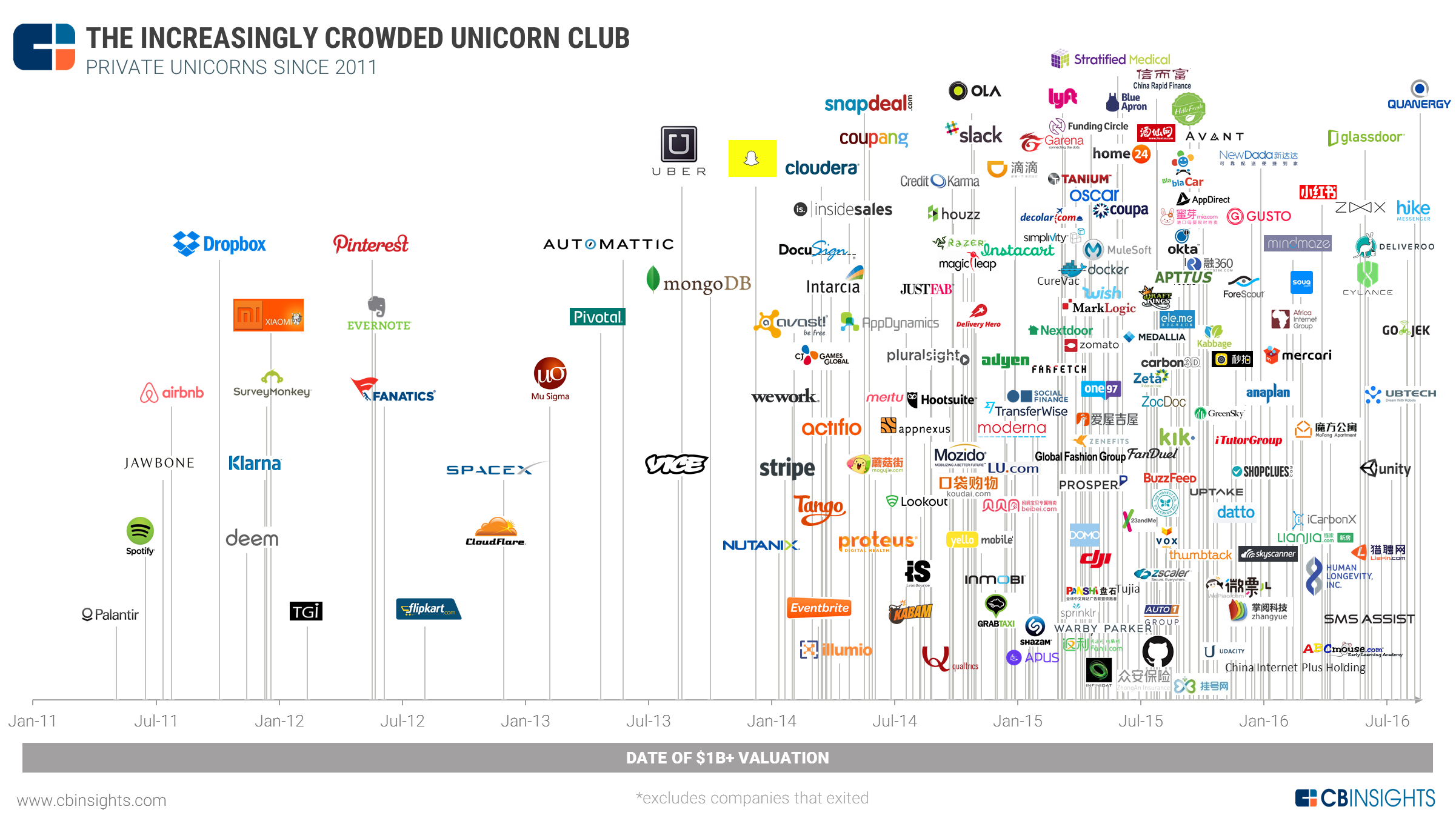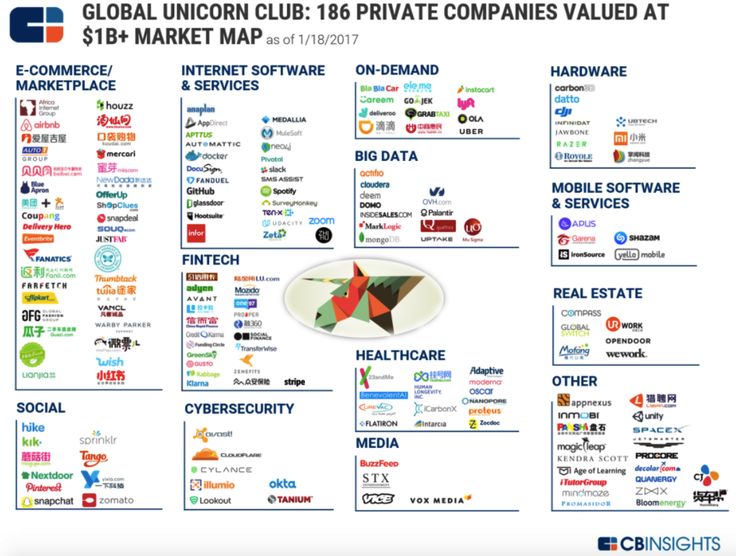Silicon Valley is changing much faster than our ideas about it. In the spring of 2014, we had an internship in Silicon Valley during the American module of the Executive MBA program of the Moscow School of Management SKOLKOVO. We attended lectures at Stanford, met with entrepreneurs and venture capital investors, and also worked on our own projects. In August 2017, once again in California, we kept asking ourselves: what is happening in the valley today? What has changed over the past three years (one of the key changes, the increase in the number of unicorns is in the first figure)? How will these changes affect all of us in the next three years?

The article turned out great, so we divided it into three parts.
In the first part, we will talk about the development of enablers and increasing their influence on the transformation of industries. In the
second - about technical shops, the general qualities of mobilizers and the development of new companies through partner business models. In the
third - we will give a vivid example of the influence of new companies on industry changes and summarize the findings of our study.
The valley is very quickly becoming the global center of technology and new industries for all industries. Since 2010, investment by venture capitalists in hardware startups has grown 30 times, and investment in machine intelligence has increased by 746% over five years. What venture capitalists invest in today is noticeably different from their interests years ago. Agriculture, construction, production technologies - in all these industries (Figure 2) the number of unicorns is growing rapidly, and in the near future they will become even more. Why?

Almost everyone we met in August said that the two main trends of the Valley in recent years are the expansion of industry diversification of dynamically growing young companies and the active development of key ecosystem elements - enablers - all attempts to translate this term into Russian meanwhile mobilizers. "
Mobilizers develop the creative energy of entrepreneurs and help transform it into projects that significantly change everything around. They inherit the functionality and culture of startup accelerators in which platforms and applications were once created. The task of mobilizers today is to transform all industries through the education and development of start-up teams. These are makerspaces, hackspaces, incubators, fab labs, tech shops, accelerators, incubators, innovation laboratories, corporate innovation centers and coworking.
Companies that can be called innovation mobilizers (innovation enablers) in the United States today more than 500 (Figure 3).

Two relevant examples are
bioCurious and
Powerhouse . The first one for $ 100 a month or $ 1000 a year gives everyone equipment, materials for the laboratory and courses for people with interests in biotechnology. One of the most interesting projects developed in bioCurious is 3D printers printing with biological materials. The organization is fully managed by volunteers.
In the Powerhouse develop projects of solar energy. In 2016, 40 startups and hundreds of entrepreneurs worked in the accelerator. Two current successes are Powerhive with software and hardware projects for energy networks, raising $ 20m, and Mosaic, the main loan provider for installing solar panels, closing an investment round of $ 220m. In 2015, Powerhouse startups participated in the commissioning of 156 MW of solar energy.
Creative production educational spaces are one of the key conditions for the development of start-ups and young companies. Mobilizers are descended from their ancestors, startup accelerators, in which years ago the applications we all use today were created: Dropbox, Airbnb, and others. Today, thousands of young people in such mobilization spaces create not only software, they are transforming all industries. After a few years, we will take a look at our production departments, look at our logistics routes and find in them a sea of cyber-physical products from companies that have left the mobilizers of Silicon Valley and other countries.
Today, mobilizers and educational spaces of a new generation work for each industry in the world. Hundreds of startups working in each of these spaces “eat breakfasts” of large corporations. These innovators aim at corporate inefficiency, constraints at each stage of the product life cycle (Figure 4 - an example for Fedex), create a solution around this inefficiency, attract investment, relatively quickly develop it into a company with a unique product, go to an IPO or sell the same Corporation, which was originally aimed. And then in a circle.
A global mechanism that destroys the old inefficient industries and entire economies is clearly working in the world - the mechanism that gives rise to projects that kill the Kodaki and Nokia of our days. The transformation of industries is accelerating exponentially.
In the transformation of classical production - the culture of modern digital production actively penetrates into everyday life: books and magazines of the Maker Media publishing house, fascinatingly telling about the methods of modern production and all possible DIY directions, are sold in every book and almost every California newspaper counter. Dale Doherty, founder of the maker movement, running several thousand maikaspeysov around the world, creator of the Maker Media and Maker Faire festivals, is sure that through active participation in the development of the educational and creative ecosystem, the team of technology enthusiasts compensate for the lack of innovation of corporations (
full interview ):
“We teach people not to do all things with their hands. We teach them much more - to use the tools, to adopt technologies within the community of skilled people, to attract expertise from around the world. This is not done by traditional universities or corporations. ”
The story about the work in the technical shops of Silicon Valley, the general qualities of mobilizers and partner business models -
in the second part .
Authors: Pavel Bilenko (Pavel_Bilenko at skolkovo.ru), Maxim Feldman (Maxim_Feldman at skolkovo.ru). Moscow School of Management SKOLKOVO, 2017.